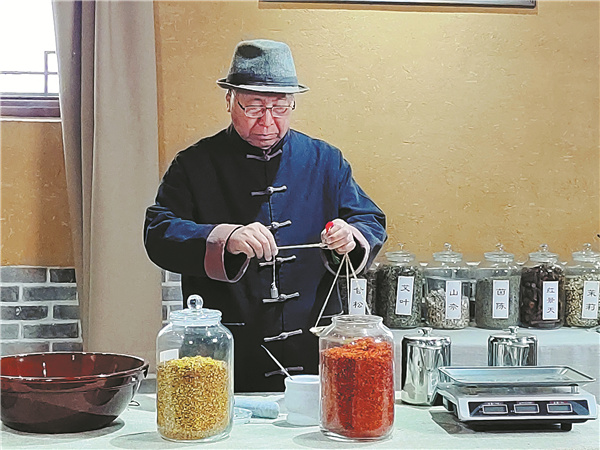

But, as he made inroads into the trade, he started to appreciate its unique appeal and charm.
Making incense requires many delicate steps and craft, from selecting the raw materials to actually molding the products.
First, one needs to ensure the main spices and the plant adhesives are in the right proportion, so the therapeutical effects can be achieved, Yang explains.
Then, the kneading procedure follows, as water is slowly poured in until a dough starts to form.
"The variations in adhesive viscosity and water usage will both affect the incense quality and are key in the production," Yang says, adding that the recipes were obtained through years of trial and error.
Next, the dough is further kneaded or squeezed into threads, pills, cakes or cones, before being fine-tuned through clipping.
"It's necessary since the incense length determines the burning time," he adds.
The final steps involve drying and cellar storage, which will keep the fresh incense from deforming or cracking and enhance its fragrance.
The country boasts a profound incense history that dates back to before the Qin Dynasty (221-206 BC). The craft and its culture thrived during the Song Dynasty (960-1279) when it was one of the four most popular activities among scholars, on a par with tea ceremonies, ink-and-wash paintings and flower arrangement.